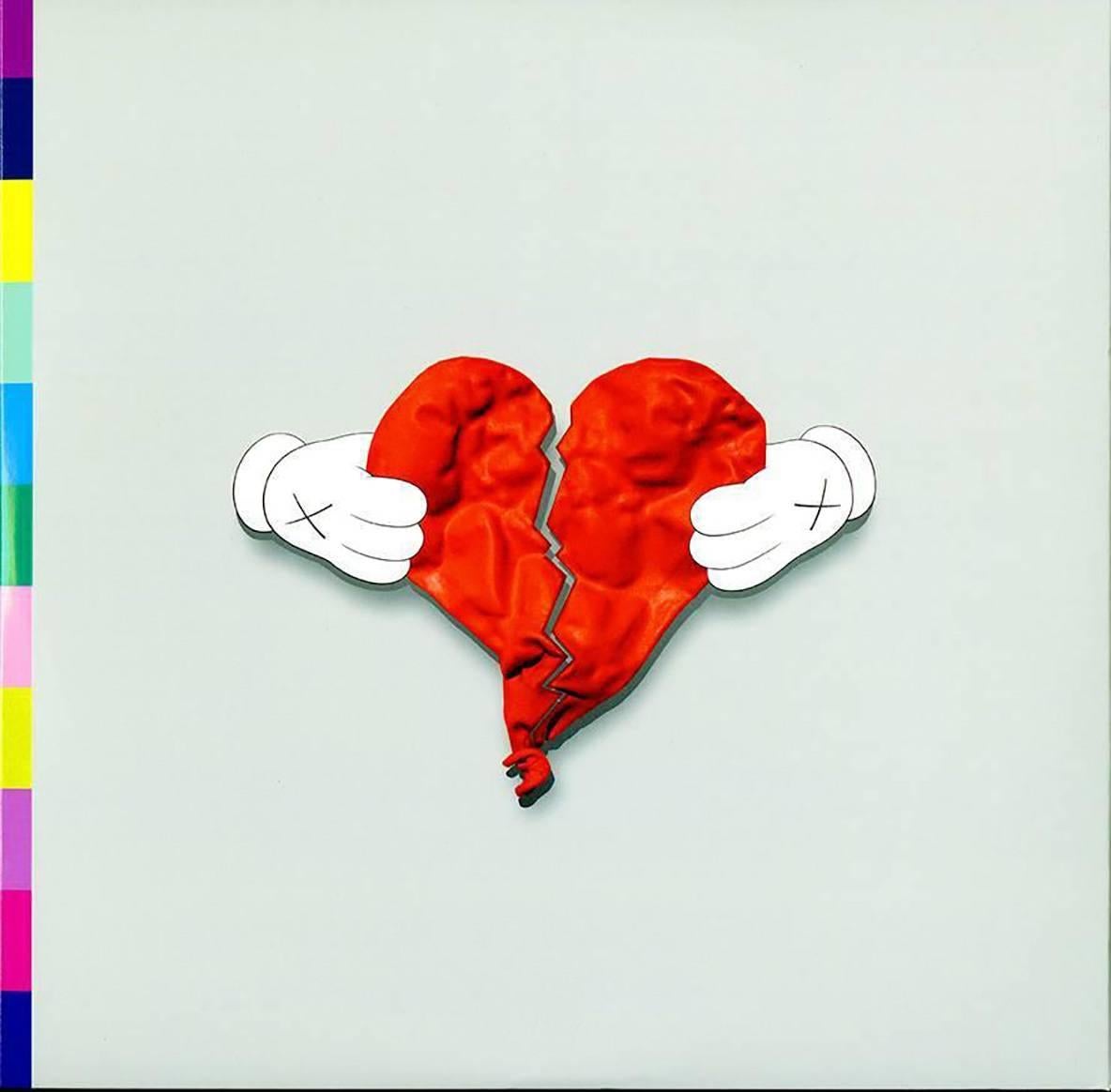

Reminiscent of Pop-Art’s simplicity, the cover proves brilliant as it foreshadows the themes that haunted Kanye West and that appear throughout his songs. This deflation communicates a sense of loneliness and emptiness while contrasting the solidity of the grey background. The mentally deflated Kanye West communicates his feelings with the shriveled heart on the center of the cover.
ART POP KANYE 808S AND HEARTBREAK CODE
Photographed by Kristen Yiengst and designed by both Virgil Abloh and Willo Perron, the cover showcases a deflated, red, heart-shaped balloon against a grey background with an obscure colour code bordering the left-side (a potential homage to the iconic graphic designer Peter Saville). 24, 2008, 808s & Heartbreak was melodic and minimalist, with Kanye singing in auto tune and barely rapping. Kanye West hinted that this album would be a sonic equivalent to the Pop Art movement.
ART POP KANYE 808S AND HEARTBREAK SERIES
This crushing series of events became the seeds of themes that would later surface in West's album, 808s & Heartbreak. At around the same time, Kanye and his fiancée, Alexis Phifer, ended their engagement. 10, 2007, Kanye West’s mother, Donda West, died as a result of cosmetic-surgery complications. Throughout his storied and successful career, three of his later album covers showcase his versatility, meticulous thought, and captivating imagination. The designs of his covers are just as fundamental as the content of his highly acclaimed music. The notoriously unapologetic, multi-Grammy winning cultural icon has greatly influenced music as well as the artistry of album covers. Their wit, message, and visual allure have been become emblems of amazing bodies of music. Often, they are a listeners’ first point of entry to an artist’s album. They are masterfully crafted artworks that intertwine beautifully with his music.Īlbum covers have long been awe-inspiring works of art their artistry being essential components to a musician’s sounds. If he runs all its tracks through Auto-Tune, it isn’t just to get the notes right, but to convey the reality of what it means to try to feel everything at once: You go numb.Kanye West’s album covers are more than just packaging. And for all its robotic austerity, 808s is a kind of kids’ album, or at least one that taps into the rush of unsorted emotions that comes with youth. Kanye says he started exploring melody because that’s how teachers taught concepts to him when he was a kid-learning through song. And no matter how alienated fame makes him feel (“Welcome to Heartbreak”), he can’t quite give it up (“Amazing”). He recognizes the transitory nature of life (“Street Lights”), but it doesn’t stop him from holding a grudge (“Heartless”).

His pain is real (“Coldest Winter”), but his arrogance is, too (“RoboCop”).

But in the intervening years, the album has become a blueprint for an entirely new wave of rap: introverted, melodic, melancholy, confessional-the sound of Drake and The Weeknd on down to Juice WRLD and Lil Uzi Vert. At least, it certainly wasn’t when it came out in 2008. It isn’t hip-hop in the conventional sense. But you’d have to have a pretty good internal compass to bet your future on where that wind’s gonna take you. You don’t need a weatherman to know which way the wind blows, Dylan sang-a line, incidentally, from the first electric song of his that most people would have heard (“Subterranean Homesick Blues”). Like Dylan, the new direction made him a genius to some and a traitor to others-a split that highlighted both the divisiveness of his art and the conservative streak in a scene where the imperative to keep it real can be as stifling as it is comforting. Like Dylan, Kanye didn’t need the fame or credibility: His third (and third multiplatinum) album, 2007’s Graduation, had come out only a year earlier, and he’d already established himself as the kind of visionary who could steer the conversation while hovering somewhere above it. Perhaps the best comparison for 808s & Heartbreak is when Bob Dylan went electric in 1965.


 0 kommentar(er)
0 kommentar(er)
